During the second World War, when most of the oil and its products had to be redirected to the front lines to become the fuel of tanks, airplanes, jeeps and personnel carriers, the rest of the civilized world had an absolute shortage of it. So much that most of the gasoline cars had been converted to use wood gas in their engines in addition to the normal gasoline that was quite scarce. They were called the wood gas cars or producer gas cars and they converted wood into a form of combustible gas that was then used in the cylinders in place of petrol. These remained on the streets till the end of the war and the auto boom shortly after wiped them out swiftly. But, now that rising global warming and unreliable supply of fuel has allowed the technology to come back from obscurity and many Nordic countries are doing research on its feasibility that it getting better and better with time.
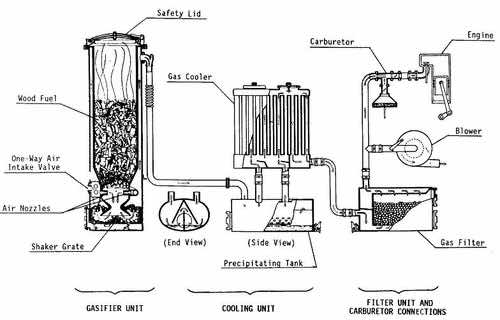
Now the process of conversion to wood gas required a stack of wood and a converter that weighed a lot as they can’t be made smaller. Their range is currently comparable to electric cars and might get better with time. Wood gasification is a process in which organic material, which is wood in this case, is converted into a combustible gas under the catalyst action of heat. The process reaches a temperature of around 1,400 degree-centigrade and its use began one and a half century ago when its domestic popularity increased in the form of lighting and cooking. Be mindful that natural gas wasn’t readily available at that time and it took several decades and the wars to end before it was made available for the general public.
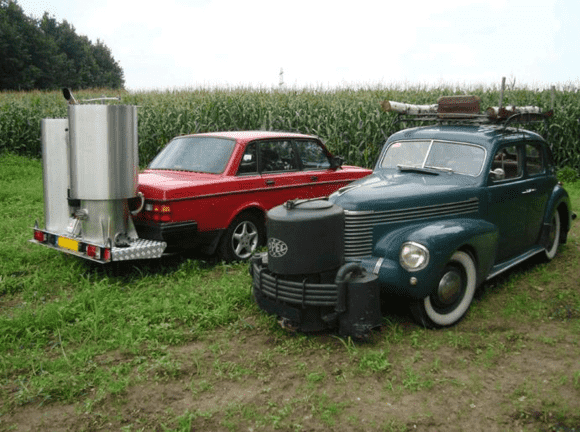
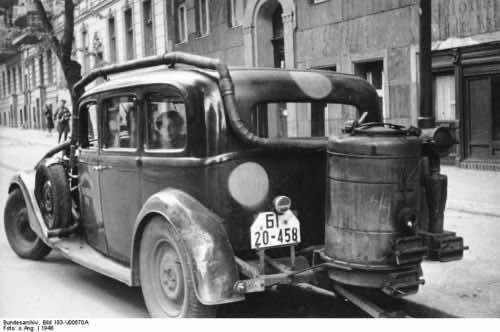
By 1920s, German engineer named Georgas Imbert had developed a gas generator for automobiles and the gas could readily be used in the car’s combustion engine. The Imbert generator became quite popular and over 9,000 cars were modified and then used all over Europe. In Second World War, the shortage of gas forced almost all domestic cars to convert to wood gas and by the end of the war, more than 500,000 vehicles were running on wood. Not only that, but a network of thousands and thousands of fuel stations was developed around the road and cities where people could stop their cars and fill firewood in their lumbering converters. Not only civilian ones but the military vehicles throughout the British army also used wood converters. The Germans, however, stuck with liquid fuels since they were easy enough to carry around. At the height of its usage, even tractors, buses, trucks and even small boats and ships were converted on wood gas. The technology fell into oblivion soon after the war and people began to get rid of the wooden units as well.
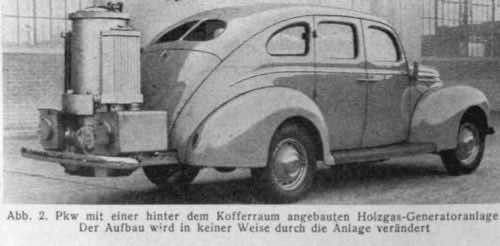
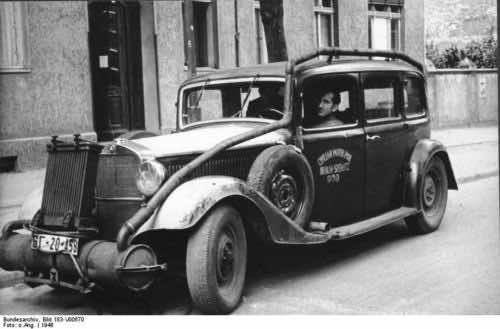
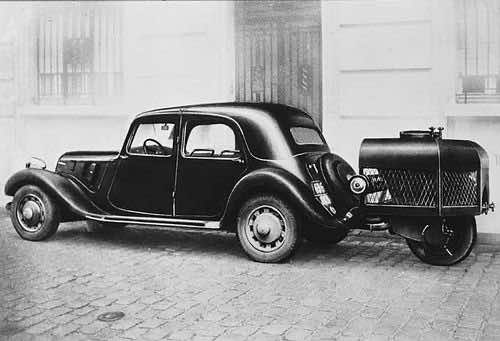
However, the Swedish engineers are of the view that the wooden units could have increased significance in the future if the oil was dropped as primary choice of fuel due to one reason or another. In parallel to this research, dozens of engineers have converted cars into wood gas alternative as well. The Scandinavian countries don’t have any oil deposits at all, but what they do have swathes of woodlands they can use as alternative fuel in case of emergency. But they can’t seriously be thinking of converting to wood gas permanently as these forests are very important in maintaining the Oxygen concentration in the atmosphere. Wood isn’t an efficient form of fuel at all, but maybe they can use coal in its place?

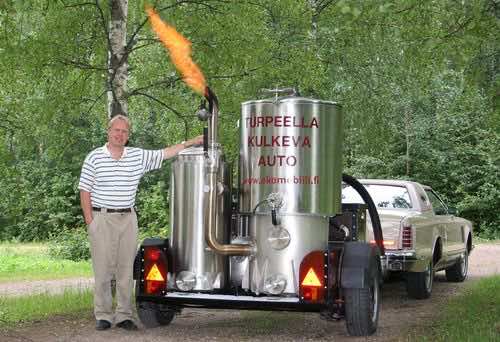
Several road vehicles were tested some time ago to carry out the feasibility of these wood-gas alternatives and covered more than 100,000 kilometers on them. The results were summarized in a FAO document in 1986. This groundbreaking research has led us to developing sustainable wood gas cars like this one from Finnish Amateur engineers:
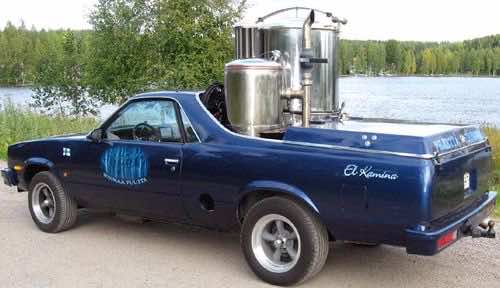
You can clearly see the converter unit which resembles a large water heater lying on top of it. Even though it uses most of the luggage space in a pickup vehicle, some vehicles developed in World War II allowed the design to entirely hide the generator and the wood. Since the primary requirement of the system is wood, it can be used in the form of chips, small logs, etc but the wood loses almost 50 percent of its carbon value. Since technically, a wide range of organic materials can be used including peat and even coal, these cars essentially run on any organic material they can find, kind of like a multi-fuel burner.
People have come up with modern designs as this Dutchman Mad Max’s Volvo 240 is equipped with a stainless steel unit perched at the back of the car and doesn’t look so bad. The inventor believes that it is actually very easy to convert your car to wood gas, but the main challenge is to make “clean” wood gas and operate the car as most designs are very lousy and the engine protests every time this gas is used. Although he has made wood gas cars, he believes they are only good for an emergency or recreational work. Wood gas generators, on the other hand, could have significant impact in heating, electricity generation and even in furnaces for the production of plastics. His car can reach speeds of 120 kilometers per hour and maintain a cruising speed of 110 Km/h. 30 Kg wood fuel can be stored in it and it will last around 100 kilometers which isn’t that bad to be honest. It is comparable to the best electric car in the market and the latter cost twice or thrice times. You can also get a trailer of wood gas generator and get it to work for you. But, it is almost as large as the car itself and consumes almost the same amount of fuel as the Volvo.
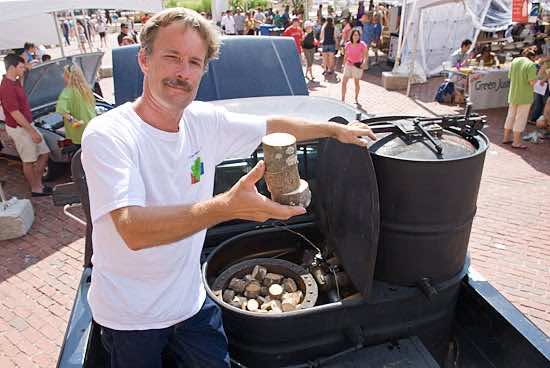
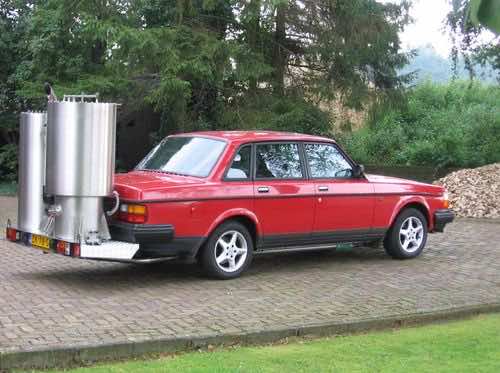
Despite the obvious ease of fuel presented by the wood cars, I am not so sure whether they have a place in the future. We cannot allow people to burn whole forests down the road just to save on some greenhouse gases and offshore drilling. Wood is somewhat renewable fuel as well, but the speed with which firewood can grow can hardly provide the billions of masses with an extra fuel option. Consider the costs of transportation, storage, etc and you will realize that wood is extremely expensive on many of these fronts, plus its energy density in fuel is quite low even though it has more or less the same efficiency as that of a gasoline engine. So, all in all, not a very bright future in the car business for wood gas cars. It does have a rugged operational nature, no chemical battery requirement and fuel saving that can be argued in the favor of a more remote usage like that in a farm or a hilltop. But, other than that, nah!
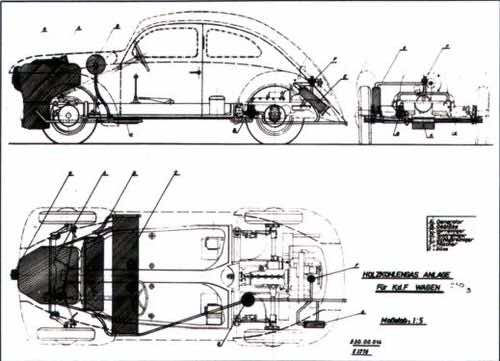
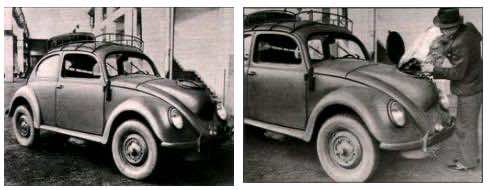
There have been many mass-produced wood gas cars in the market. Remember the classic Volkswagen Beetle from World War II? The enormous front compartment of the car was actually a storage unit for wood and refilling was carried out through a hole in the bonnet.
This Mercedez-Benz from the same era also has a wooden gas generator and compartment entirely hidden from view which is a good thing.
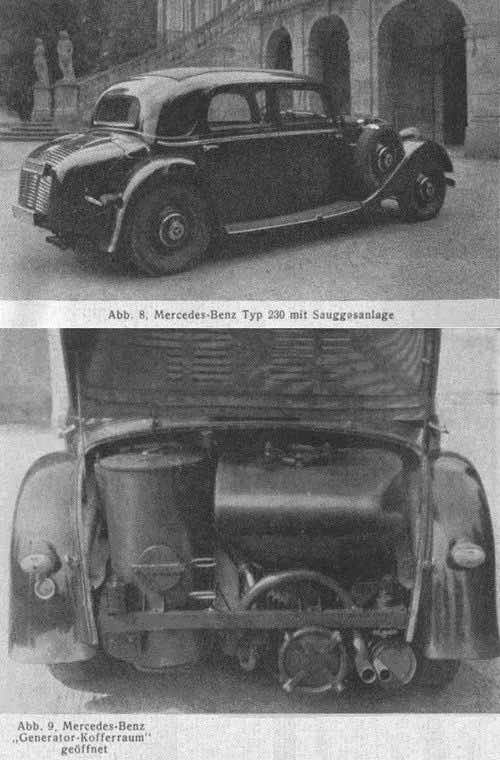
So, if you had the resources and were looking for clean energy directly from the woods, would you give this wood-powered vehicle a chance?



On the other hand, the options are not too extensive,
but the odds seem a bit more realistic than for instance
‘Real Blackjack’. But in order to meet the stringent deadlines sometimes working
on-the-go becomes a necessity for many developers.
How does this happen when using Ozeki Android SMPP SMS Gateway.